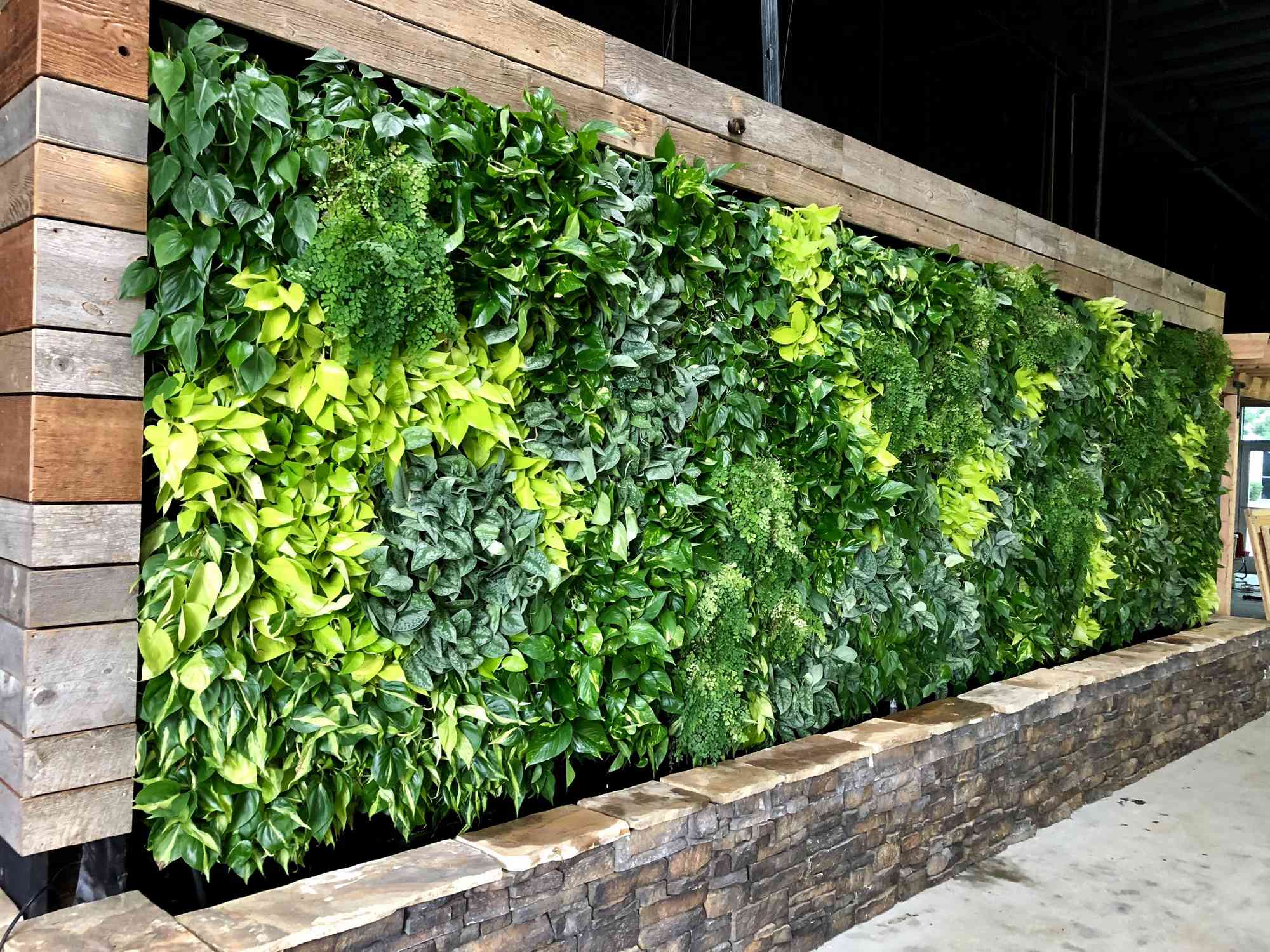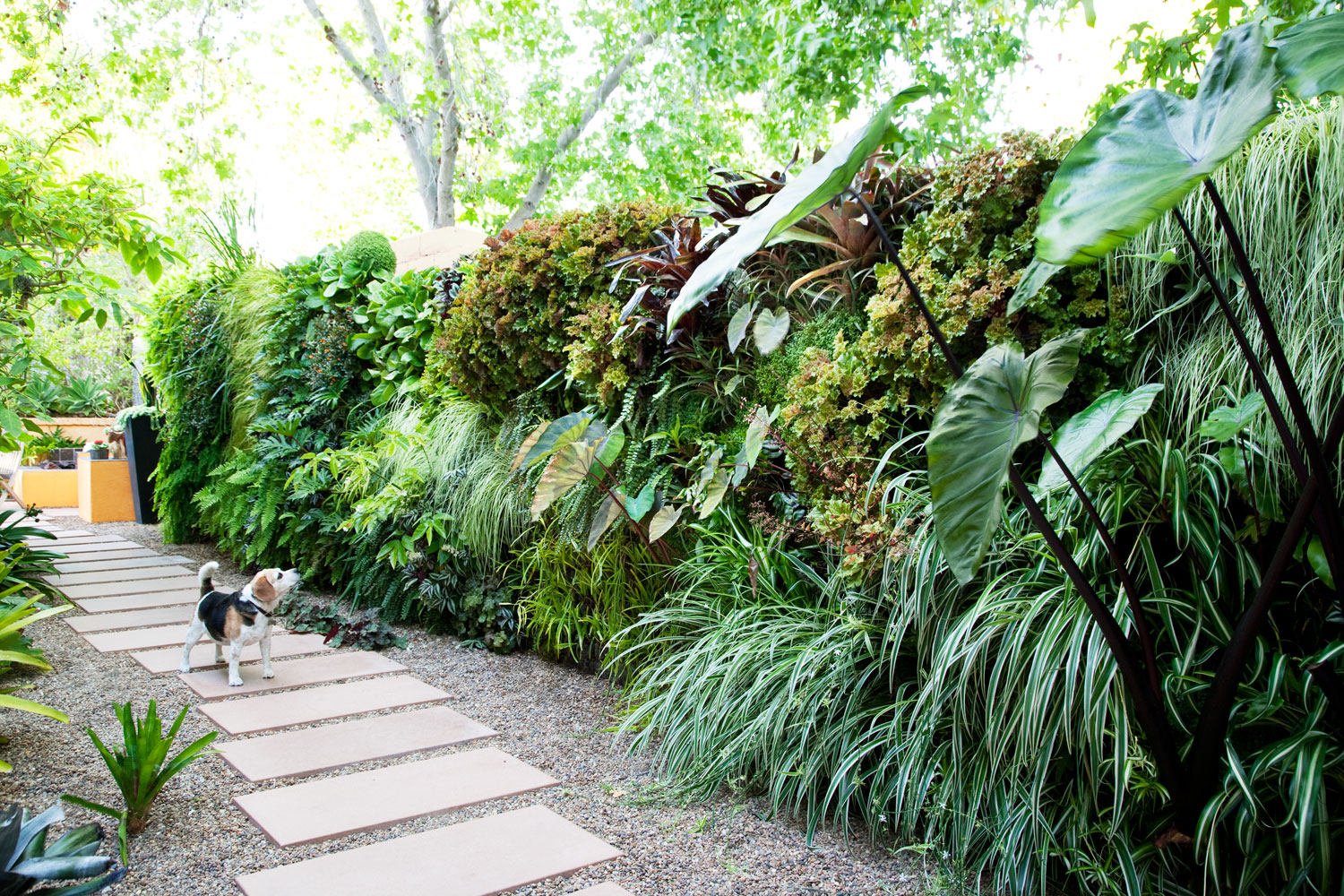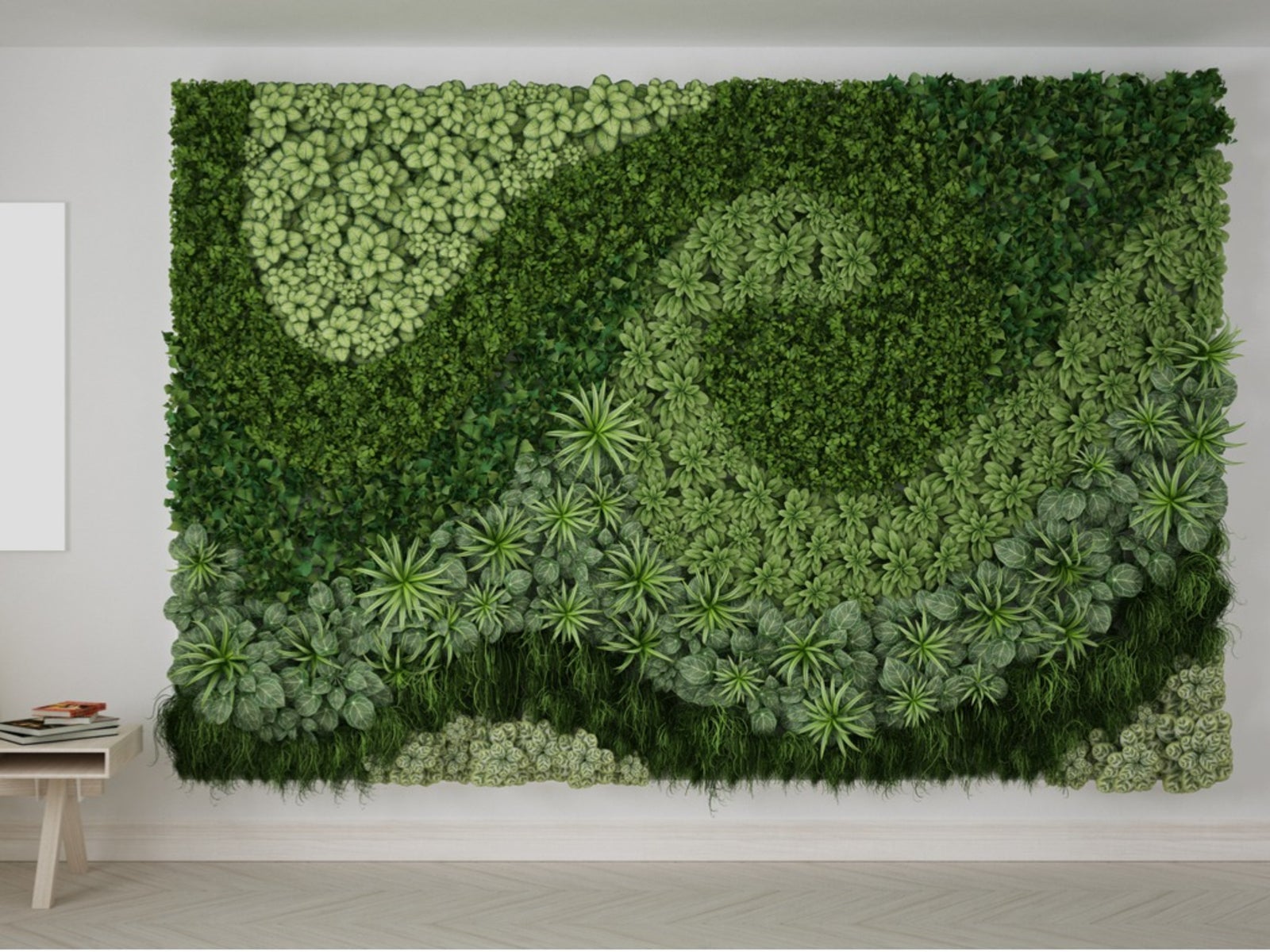Plants for living walls are an innovative and sustainable design element that offers numerous benefits, including improved air quality, enhanced aesthetics, and increased employee well-being. This comprehensive guide delves into the selection of suitable plant species, design principles, installation techniques, and maintenance practices to ensure the health and longevity of your living wall.
From the initial planning stages to ongoing maintenance, this guide provides practical insights and expert advice to help you create a thriving and visually appealing living wall that transforms any interior space.
Plants for Living Walls

Living walls, also known as green walls or vertical gardens, are an innovative way to incorporate nature into interior design. They not only enhance the aesthetic appeal of a space but also provide numerous benefits for occupants and the environment.
The presence of plants in indoor environments has been shown to reduce stress, improve air quality, and boost productivity. Living walls, with their large surface area and dense vegetation, amplify these benefits by effectively absorbing pollutants, releasing oxygen, and creating a more inviting atmosphere.
Plant Species Selection for Living Walls
Choosing the right plant species for a living wall is crucial for its long-term success. Factors to consider include light availability, watering requirements, and the overall design concept.
Suitable plant species for living walls typically include:
- Pothos (Epipremnum aureum): A versatile and low-maintenance plant that tolerates a wide range of light conditions and watering schedules.
- Snake plant (Sansevieria trifasciata): A drought-tolerant plant that thrives in low light and can help purify the air.
- ZZ plant (Zamioculcas zamiifolia): Another low-maintenance plant that tolerates neglect and can survive in low light conditions.
- Spider plant (Chlorophytum comosum): A fast-growing plant that produces long, cascading stems with new plantlets.
- Ferns (Nephrolepis exaltata): Delicate and graceful plants that prefer high humidity and can add a touch of elegance to a living wall.
Installation and Maintenance of Living Walls: Plants For Living Wall

Installing and maintaining living walls requires careful planning and attention to detail to ensure their health and longevity. This section provides a comprehensive guide to the installation and maintenance process, covering substrate selection, irrigation setup, plant placement, watering schedules, fertilization, pest management, and regular monitoring.
Living walls are vertical gardens that bring nature indoors and offer numerous benefits, including air purification, improved acoustics, and enhanced aesthetics. They can be installed in both residential and commercial spaces, adding a touch of greenery and freshness to any environment.
Substrate Selection
The substrate is the growing medium in which the plants are rooted. It provides support, nutrients, and moisture retention. When selecting a substrate for a living wall, it is important to consider factors such as porosity, water retention capacity, and nutrient content.
- Porosity: The substrate should have good porosity to allow for proper drainage and aeration. This prevents waterlogging, which can lead to root rot and other problems.
- Water retention capacity: The substrate should be able to retain sufficient moisture to meet the plants’ needs without becoming waterlogged.
- Nutrient content: The substrate should contain essential nutrients for plant growth, such as nitrogen, phosphorus, and potassium.
Irrigation Setup, Plants for living wall
Proper irrigation is crucial for the health of living walls. The irrigation system should be designed to deliver water evenly to all plants and prevent overwatering or under-watering.
- Drip irrigation: Drip irrigation is a common method for watering living walls. It involves using a network of tubes and emitters to deliver water directly to the base of each plant.
- Misting: Misting systems spray a fine mist of water over the plants. This method is often used to increase humidity and cool the plants.
Plant Placement
Plant placement is an important factor in the design and success of a living wall. Plants should be selected based on their light requirements, growth habits, and compatibility with other plants.
- Light requirements: Plants should be placed in areas that receive adequate light for their needs. Some plants prefer bright, indirect light, while others can tolerate lower light levels.
- Growth habits: Plants with different growth habits should be placed together to create a visually appealing and balanced arrangement.
- Compatibility: Plants that are compatible with each other will grow well together and create a harmonious living wall.
Applications and Case Studies of Living Walls

Living walls have gained immense popularity as innovative and impactful design elements in various settings, including offices, retail spaces, and public areas. Their unique ability to combine aesthetics with environmental benefits has made them a sought-after solution for architects and interior designers.
Case Studies: Improving Indoor Air Quality
Studies have shown that living walls can significantly improve indoor air quality by removing harmful pollutants and releasing oxygen. For instance, a study conducted by the University of Washington found that living walls reduced airborne particulate matter by up to 50% and volatile organic compounds (VOCs) by up to 20%.
Employee Well-being and Aesthetics
Living walls have also been found to have a positive impact on employee well-being. A study by the University of Exeter revealed that employees exposed to living walls experienced reduced stress levels and improved cognitive function. Additionally, the visual appeal of living walls can create a more inviting and aesthetically pleasing work environment.
Sustainability and Eco-friendliness
Living walls offer a sustainable and eco-friendly design solution. They can help regulate indoor temperature, reduce energy consumption, and provide a habitat for beneficial insects. By incorporating living walls into buildings, architects can create greener and more environmentally conscious spaces.
